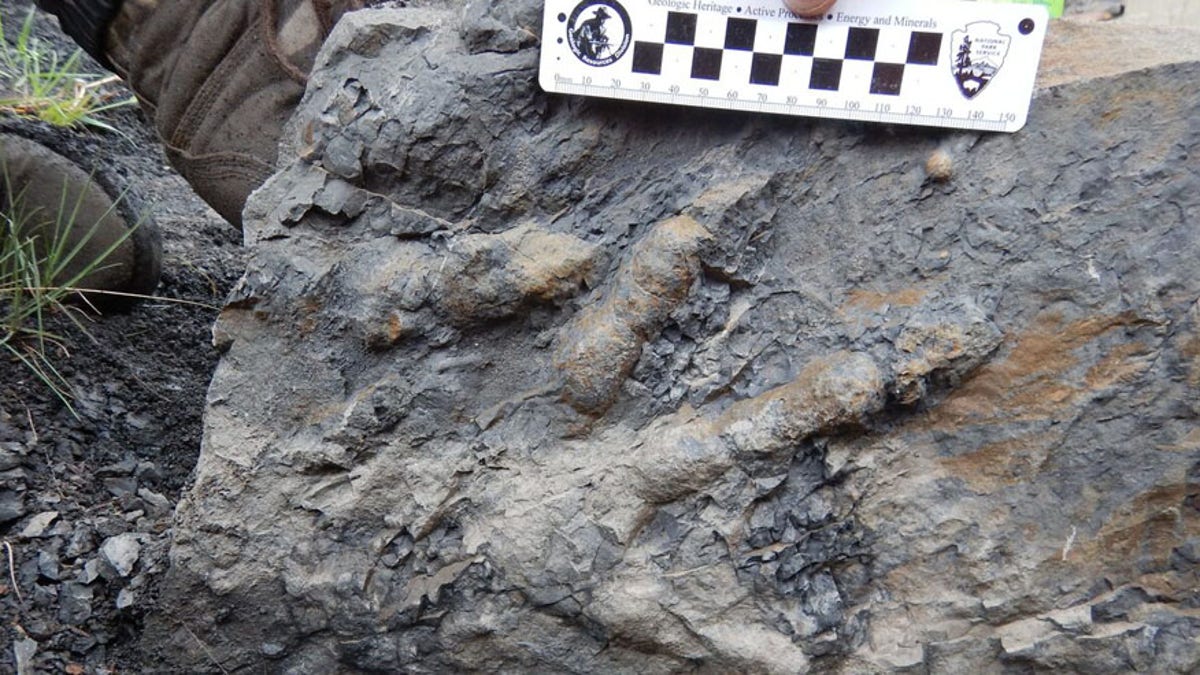
An extremely well-preserved footprint in Denali National Park reveals a meat-eating dinosaur’s claws, fleshy toe pads and pebbly skin texture. (Pat Druckenmiller/University of Alaska Fairbanks)
Alaska’s Denali National Park just threw researchers a major, ancient bone.
In July, while a team was working alongside the National Park Service, it discovered four “significant” fragments, including an ossified tendon. These fragments were “clearly parts of bigger bones from a large animal,” wrote the team in a press release.
Pat Druckenmiller, curator of Earth sciences at the University of Alaska Museum of the North, said the tendon fragments probably belonged to a hadrosaur. These duck-billed larger ornithopod dinosaurs were herbivorous and are thought to have been the most abundant large animals in Alaska.
“Another larger fragment is composed of spongy bone originating from the end of a large animal’s limb. This microstructure shows the bone didn’t come from a crocodile or other slow-growing, cold-blooded animal. It is clearly from a medium-sized to large dinosaur,” wrote the team.
This discovery comes more than a decade after the first dinosaur evidence first surfaced. In 2005, animal tracks were found in the Cantwell Formation near Igloo Creek. Although thousands of tracks have been found in the park since then, the fragments represent the first identifiable bones from animals dating to the Cretaceous period.
Druckenmiller and Denali National Park will collaborate over the next several years and explore additional areas of the preserve, looking to make new discoveries, according to the team.
“This marks the beginning of a multi-year project to locate, document and study dinosaur fossils in Denali National Park,” Druckenmiller said. “This is a world-class site for tracks of dinosaurs and other animals that lived in Alaska during the Cretaceous Period. Now that we have found bones, we have another way to understand the dinosaurs that lived here 70 million years ago.”




















